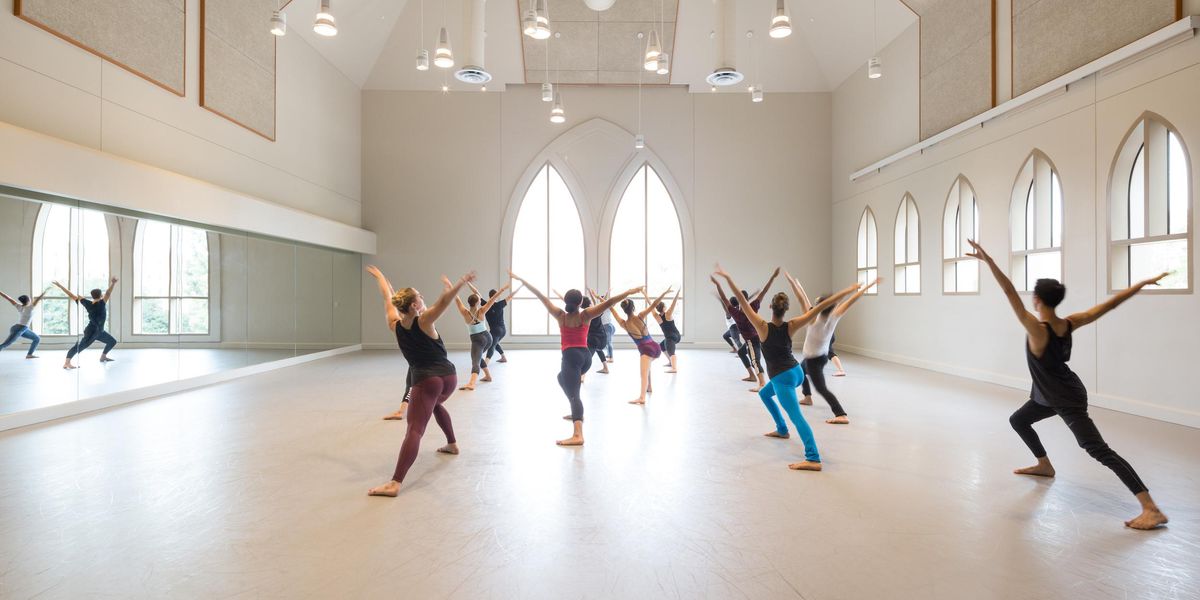Quick Q&A: Tere O'Connor
For his BAM debut, the choreographer taps recent work as starting points.
As a choreographer—and a conversationalist—Tere O’Connor likes to dig deep. He shared some of his thoughts on dancemaking with Cynthia Hedstrom in September, just a few days before the premiere of a new duet, Sister, at the University of Illinois at Urbana–Champaign. Sister is one of three works (along with Secret Mary and poem) that O’Connor is using as source material for his new work, Bleed. He composed the three works over the past two years with different starting points, dancers, and compositional structures. The three pieces, with all 11 dancers, will “bleed” together to create a new work that will premiere at Brooklyn Academy of Music, Dec. 11–14. In their conversation, O’Connor spoke about his creative process.
Tell me about the different approaches you took to making each of the three dances that will morph into
Bleed. The first dance, Secret Mary, was a way of looking at how influences from my colleagues and dancers find their way into the work. The first day of rehearsal I said, “Do the dance.” So they did a 30-minute improvisation and we analyzed that, trying to find common sources of meaning. It’s about a convergence of ideas in a kind of tornado of reference.
Poem
was completely different. I was looking back at artifice and dance, and the first way that I made work. I generated all the movement. I was looking to poetics and embracing formality. Sister has other qualities. I wanted to look at how there can be vast difference inside sameness. Sisters are both the same and different. They are not converging to a finality; they are variants of each other.
And the new work,
Bleed? The dance right now doesn’t refer to the movement of the other pieces, but the processes and the relationships of the 11 dancers. Through the collapsing of the three dances, all these things ricochet against each other to create a new syncretic culture.
For me, dance is constantly moving forward with these histories being created every second. The way these histories reassert themselves in the next dance is a ghosting, not a visibility. So they “bleed” there; they are inside of it.
What is your choreographic position as the outside eye?
I don’t work from the ideology of finding the best idea. I’m in a place of absolute acceptance of everything. As things converge they create a choreographic engine that starts to push and go somewhere. This process undermines concepts like theme and variation, and other default choreographic ideas.
For me, it’s not about translating preexisting ideas. Between all of the sources and disparate ideas there is this other thing that happens. That is the dance.
I find there’s rarely a clear resolution in your dances.
Dance resides very near consciousness to me. I’m interested in looking at the whole of consciousness. It’s a place for political idealism, where something that might not work in society can be suggested onstage.
What’s interesting and potent about choreography for me is that there are layers. It suggests a deeper way of looking at what’s going on.
Left: Michael Ingle and Silas Riener in
poem.
Does this require a new way of looking at dance for the audience?
I’m not saying there has to be a new lens, but I say, “Keep looking.” Often people desire dance to do something that narrative does, or theater does. I don’t think dance wants to do that. Just as there are disparate languages in the dance, so are the results of viewership.
Christian references keep popping up in your work.
Absolutely. I was brought up Catholic. The Madonna references in Secret Mary are present as an idea, the magic of immaculate conception. How an idea is born—from nothing. It’s all woven into different strata of thought. And because I’m not trying to find the winning thought, I’m looking at how all these thoughts converge.
The dancers are constantly changing modes in your work, often abruptly. There’s a lot of persona-shifting going on that’s coming from them, which includes various states—traditional acting, a disdain for the controls of the choreographer, an awareness that virtuosity is hiding something pretty ugly about being a human being, and whatever is going on in their body. I’m asking them to have all of these things flying together at once. Every performance is activated afresh.
You’re the Center for Advanced Study Professor in Dance at the University of Illinois. What is the interface of making choreography and teaching for you? Teaching is very intertwined with my making. I ask a concentric deepening of questions around the work with my students, so I have to redouble my efforts to do that myself. It kind of dislodges my brain when I’m stuck on something.
Photos by Paula Court, Courtesy BAM.




